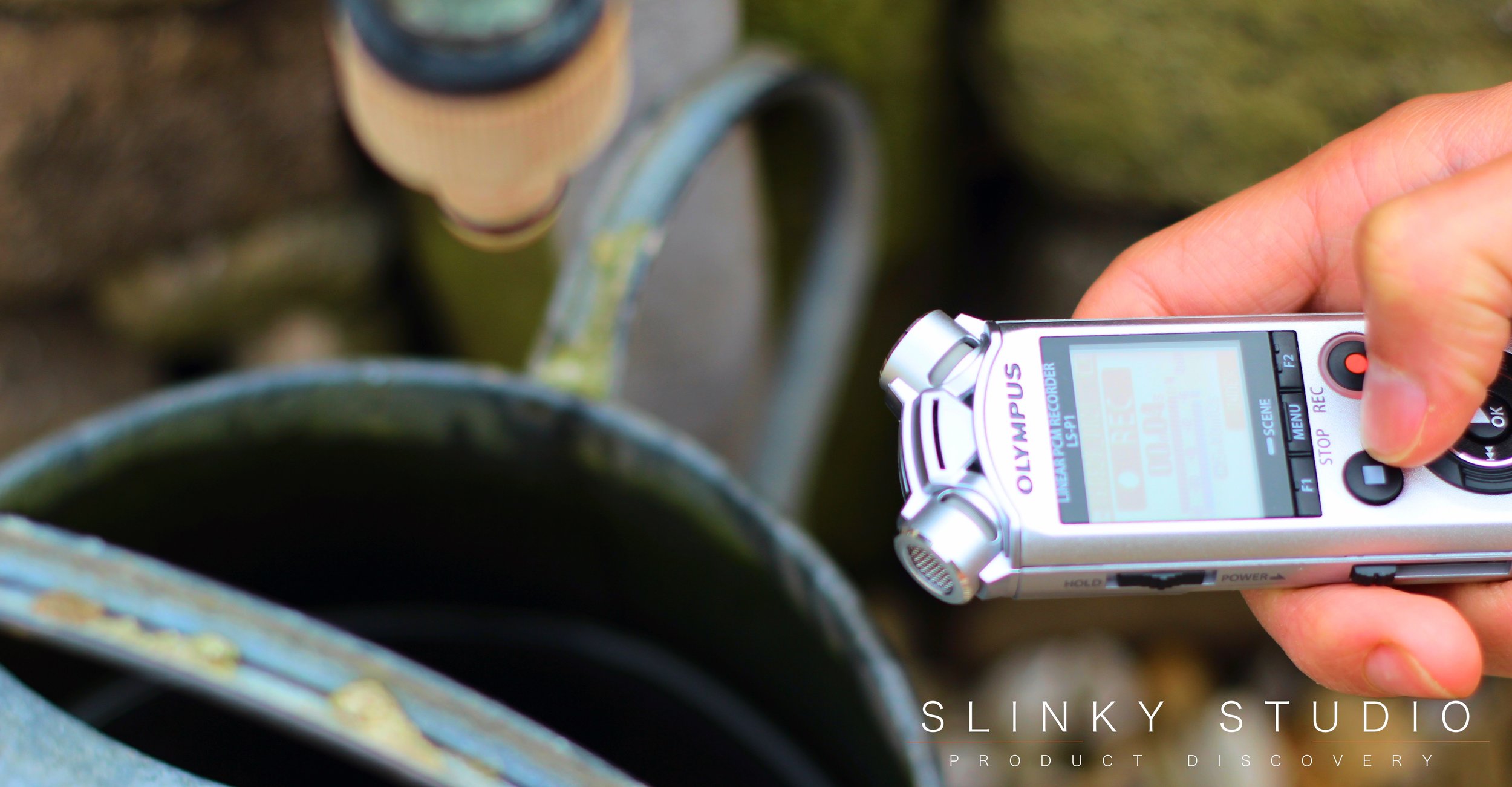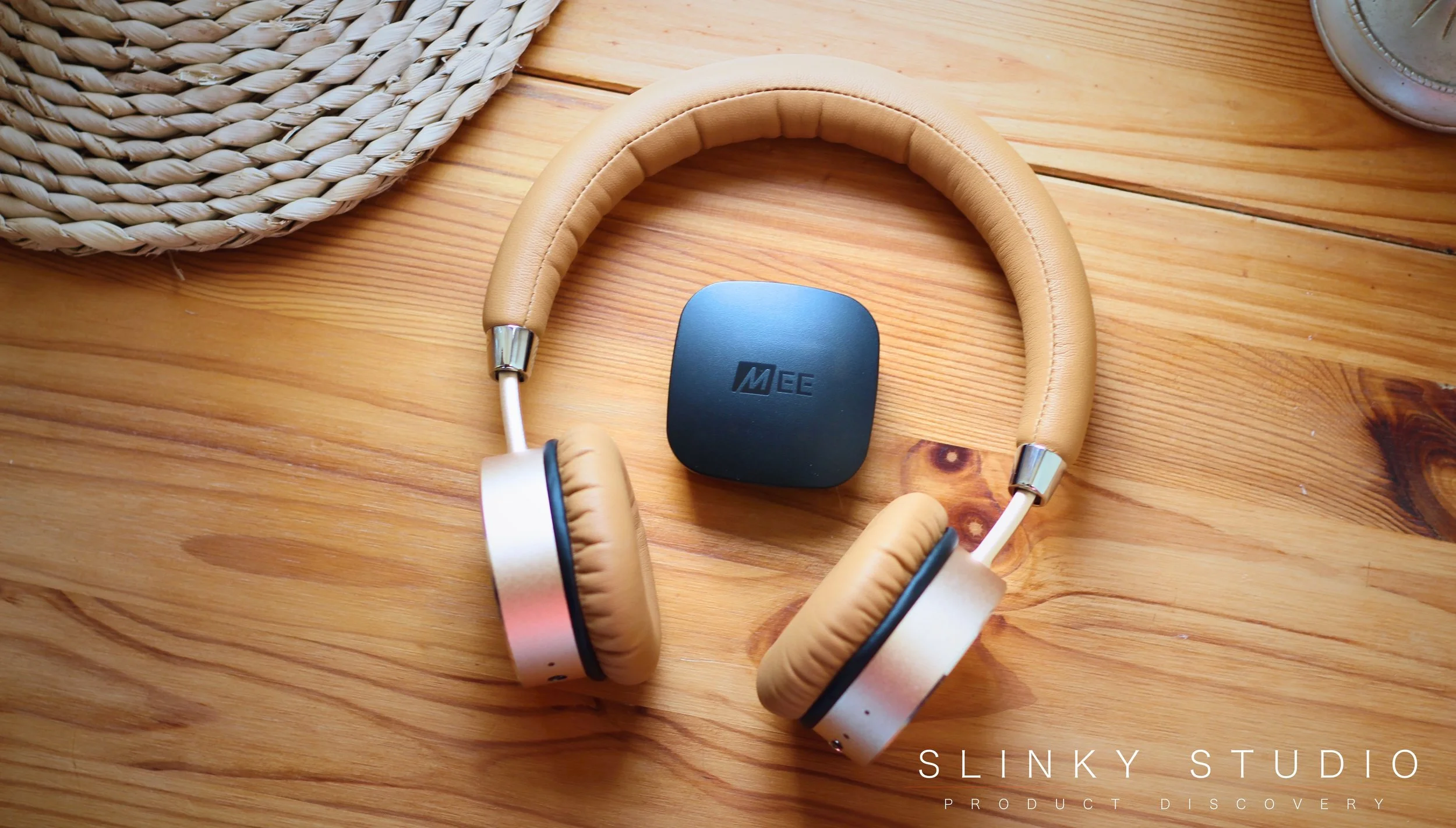Olympus LS-P1 Audio Recorder Review
The £149 Olympus LS-P1 Audio Recorder is described as suitable for capturing audio at distance and wide scope. Its zoom microphone capabilities are promoted for use in short films, recording 2-way interviews and university lectures from the very back of the auditorium.
Design
First and foremost this is a product that is friendly to set up, coming with a single Olympus AAA rechargeable branded battery included. What’s more it’s a pleasing object to hold and has a metal lined body holding it together. It’s the kind of pocketable device that can definitely take a beating throughout its lifetime of being left on strange surfaces, and it could probably be dropped a few times too for good measure. It’s a reasonably straightforward looking audio recorder, with a backlit 1.43 inch screen along with control navigational buttons located underneath it. On the left side, as well as a flip switch for turning the device on, there’s a flip-out slider to release a satisfyingly smooth USB stick for immediate importation needs. The right side features an external microphone input and a headphone auxiliary input.





User Interface & Controls
We found the UI generally straightforward and simple. Although the screen is backlit the actual display and design of the UI is quite dated - but it works well nonetheless and is easy to read. It’s a bit like scrolling through the options of an older styled mobile phone of the early naughties. The most important buttons on the front of the device are the left large one with a white square to stop and the right red circle that initiates recording. Playback and volume controls are positioned underneath and lower down from them is a yellow erase button; on the right there is a list button which cycles through a basic list of recordings - or if pressed again we can access a calendar to see a clear directory of date stamped recordings.
The backend settings, accessed by pressing the menu button, allow the user to choose how they want recorded files to be sorted; if they want to move or copy them to the inbuilt 4GB memory or micro SD card. Furthermore, in the audio adjustment settings we can cycle through equaliser presets or manually adjust different audio frequencies; voice detection can be adjusted, video syncing is present too and how wide the zoom microphones' functionality records. There are many other settings with less relevance regarding day to day usefulness, but one of the standout favourites was the ability to adjust the screen brightness/contrast, simply because it’s helpful for screen visibility when outdoor recording.


Recording Performance
We’ve primarily been recording snippet examples that would best suit short films. However, you can attain a comprehensive understanding of how well the Olympus LS-P1 does from our eclectic mix of up close recordings to distant sounds in our sample audio recording below.
Talking: The spoken word is high on the list of audio recording achievements Olympus believe they have made with the LS-P1. We can’t really argue with them: for 2-way interviews it’s immediate and dissects voices well. In broader scenarios, such as public spaces where the chatter of dozens of people can be heard, the Olympus does a good job by not turning this into a consolidated mess.
Piano: To test how well the Olympus handles stereo input on a broad soundstage we positioned it in front of a full-sized keyboard. Anyone listening to our recordings through stereo speakers will clearly hear the distinction of the keyboard's spectrum and we were impressed with the detail of each key press captured too.
Water Droplets: This was a relatively simplistic recording of water droplets falling from a tap into an echoey cast iron watering can. The effect is pronounced and clear with zero distortion from the up-close recording style.
Wind: Our wind test is demonstrated by using our Dyson Pure Cool Link fan running at full power with the Olympus LS-P1 audio recorder positioned 4cm away from it. The full brunt of the breeze is projected into both microphones and we thought the results were quite strong considering there’s no windshield housed on the mics. When the fan oscillated and was positioned at a 45 degree angle, there was blatant wind distortion. But remember these were extreme circumstances.
Walking On Gravel: Crunchy is the word to best describe this sound. We walked back and fourth on a 5 metre gravel pathway but noticed a bit of wind distortion in our recordings; although no doubt this could probably be removed with use of a windshield covering the microphones. Overlooking this small point the gravel was almost the exclusive sound presence.
Verdict
We’ve focused on how well the Olympus LS-P1 Audio Recorder works indoors and outdoors - at a distance and up close. It’s fit for short film makers and YouTube production, but is also a handy microphone for university students to capture lectures from afar as well as interviews too. It’s all wrapped up in a handy pocketable design with a slide-out USB stick making importing the audio files a doddle.






